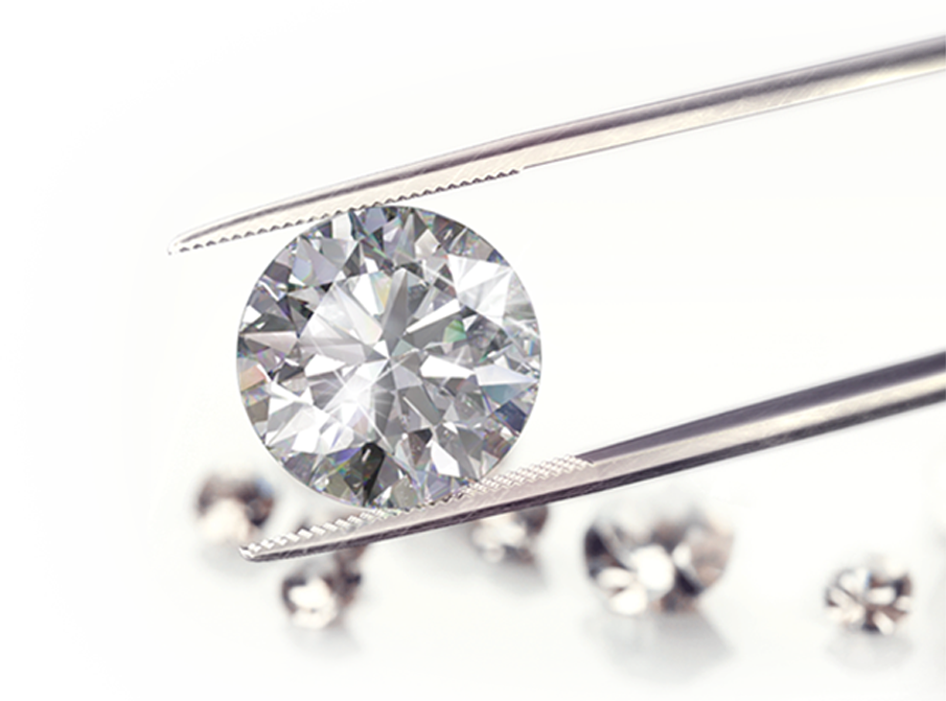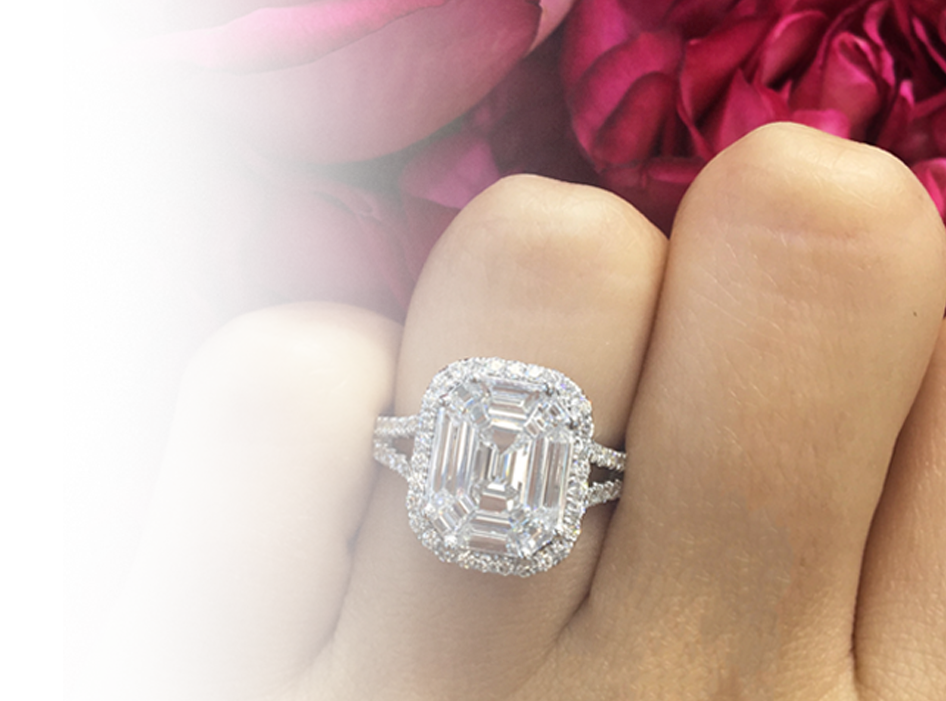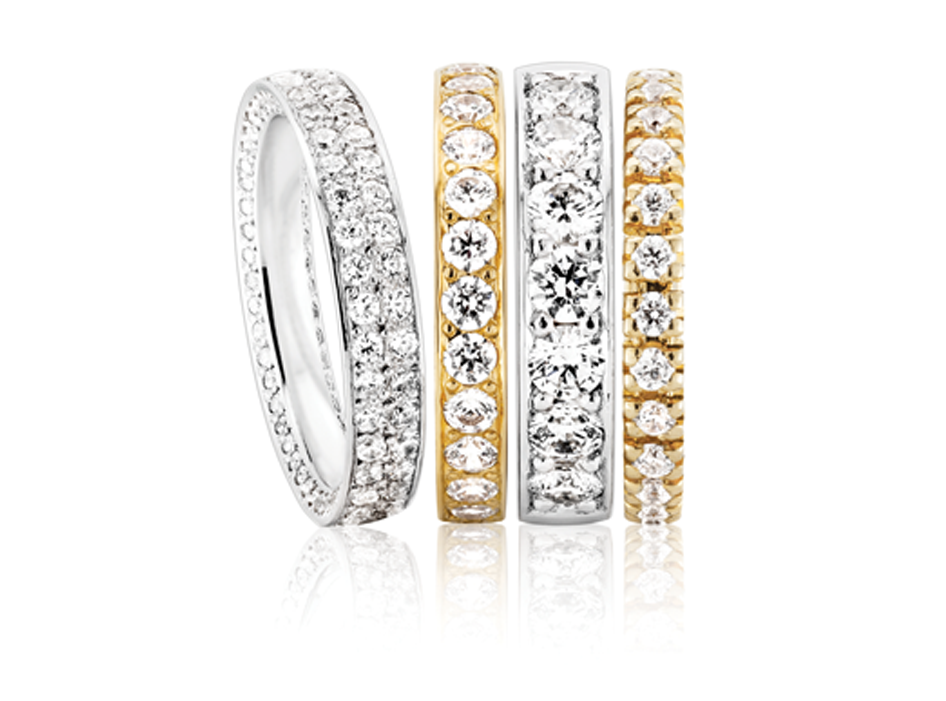Understanding diamond colour is very important for making an informed choice when selecting the best diamond for that dream ring - or another special jewellery piece. So, what exactly is “diamond colour”?
Simply speaking, this term is used to describe how clear the diamond is and whether it has some shades of yellow. The diamonds of the highest quality are absolutely colourless - so, if a diamond has any degree of yellow tint, this indicates its lower quality.
The Gemological Institute of America (GIA) uses the colour scale that grades all diamonds from D (a colourless diamond) to Z (a light yellow or brown diamond), with many diamond colour grades in between.
When shopping for the best diamond for your needs, you should always remember that a diamond’s value is largely based on its colour. There are many coloured diamonds on the market - and pink, blue, or yellow diamonds do feature in some absolutely stunning statement engagement rings. However, if you are after a white diamond, you should generally aim for one with no yellow tint, as even slight colouring present in the diamond affects how it reflects the light, making it less radiant.
Colourless diamonds without any touch of yellow are quite rare and valuable - and rank high on the diamond colour grading scale.
How Does The GIA Grade Diamond Colour?
The table below will help you understand the GIA’s guidelines for grading Diamond Colour.
| Diamond Colour Grade | Description |
| D |
The highest diamond grade that shows nearly no colour - both to the naked eye and if examined under the magnifying glass. D grade diamonds are the most expensive diamonds, often set in platinum or white gold to highlight their radiance and beauty. |
| E |
Almost identical to the D grade diamonds; any differences are only detectable by expert gemologists using magnification. |
| F |
The difference between the F grade diamonds and the higher grades would only be apparent to experts, as these diamonds have nearly no visible colour - even when examined under magnification. |
| G |
The highest grade of the GIA’s diamond colour scale. The G grade diamonds appear nearly colourless to the naked eye; any tints of colour they have are nearly impossible to detect without magnification. |
| H |
The H grade diamonds still appear colourless to the naked eye - but under magnification some yellow tones can be detected, particularly if the H grade diamonds are compared side by side with the higher grade ones. |
| I |
These diamonds still appear nearly colourless to the naked eye, but you can see some yellow tint when comparing them to the diamonds of a higher grade. The I grade diamonds often are good value for money. |
| J |
Nearly colourless to the naked eye; some yellow tint is detectable when examined under magnification and bright lights. In the J grade diamonds with a large table the yellow tint can also be seen with the naked eye. |
| K |
The slight yellow tint can be visible to the naked eye. The K grade diamonds are generally not set in platinum or white gold. |
| L |
Yellow tint is visible to the naked eye even if viewed under normal lighting conditions. These diamonds are affordable and usually look great in yellow gold solitaire rings. |
| M |
Quite obvious yellow tint can be seen even with the naked eye. While very affordable and still often looking great when set in yellow gold, these diamonds are normally the lowest grade available online. |
| N-R |
This range covers the diamonds displaying definite yellow and brown tinting under normal lighting conditions. |
| S-Z |
The lowest diamond colour range; covers diamonds with very noticeable yellow or brown tints. |
Fancy colour diamonds do not follow the same grading scale but are graded based on the intensity of their colour. The fancy colour diamond scale goes from Faint to shades of Light - and, finally, to shades of Intense. The most valuable fancy colour diamonds are usually found in the Fancy Intense and Fancy Vivid grades.
Does The Diamond Colour Matter?
It is important to take the diamond colour into consideration when choosing the right stone for your dream jewellery piece. While D colour grade is the highest possible one to be achieved by any diamond, you’ll often find that diamonds of lower grades have identical or nearly identical appearance, especially when viewed with the naked eye - while their price can be substantially lower.
While the G to H grade diamonds look best when set in white gold and platinum, the I grade ones are more affordable and quite versatile, as they can still be set in white gold and platinum but also look good in yellow and rose gold. The diamonds graded J and below should only be set in yellow and rose gold.
Always remember that the beauty of a diamond is not determined by its colour only but is based on the 4 Cs - Cut, Colour, Clarity, Carat Weight. That is why it may be quite hard to single out just one characteristic - such as colour or clarity - of a diamond, especially when examining it with the naked eye.
So, instead of focusing on just one element of a diamond’s appearance - even as important as its colour - it is always best to consider its overall beauty and make your purchasing decision accordingly.




































